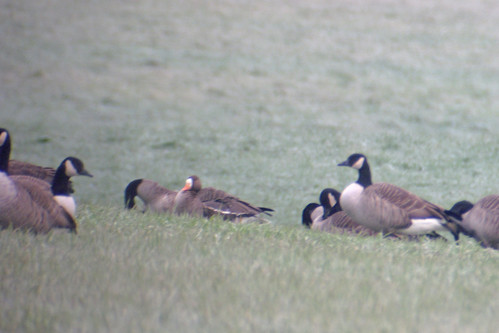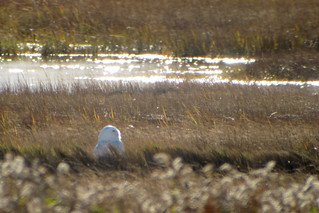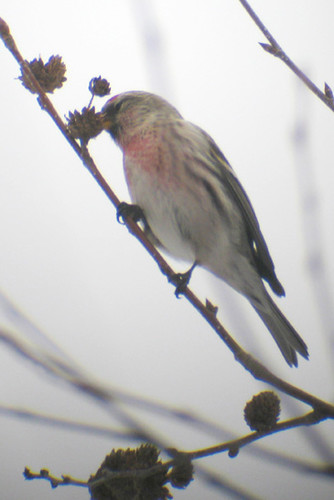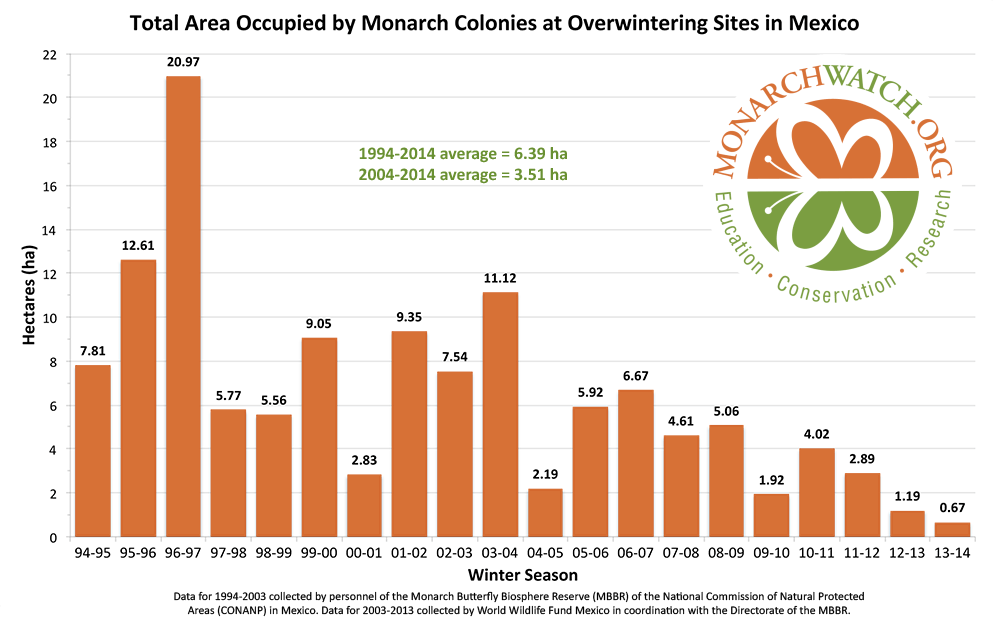 |
| Long-eared Owl, a Plainfield CBC first! |
The 54th annual Plainfield Christmas Bird Count
took place under clear skies this past Saturday, December 20. It was the first
sunny day in a long time, and despite single-digit temperatures at the start,
the calm conditions made for a superb day to be outside, enjoying nature, and
counting birds. A near-record 45 participants combed out across the count circle
tallying 4,962 individuals of 43 species, exceeding our 10-year average of 38.7
species.
The highlight of this year’s count was a LONG-EARED OWL
first discovered by Chip Darmstadt as it soaked in the
late-afternoon sun. By incredible coincidence, what has been presumed to be the
same bird was later independently discovered by Eric Cannizzaro as it was
hunting over a field in near-darkness. This unexpected find was a first for the
Plainfield count, and with reports from a nearby landowner that this rare and
sensitive species has nested here in the past, its location will be kept
secret. Another first for the Plainfield CBC was a lone SNOW GOOSE seen flying
south.
The increase in ‘southern’ species continues to be a trend
this year, with the count’s second ever sighting of a Red-bellied Woodpecker.
Carolina Wren was observed for only the 4th time, with a record high
of 3 individuals observed (all at feeders). Northern Cardinal and Tufted
Titmouse, which have seen large increases in the past decade, were seen in decent
numbers, with 41 and 17 respectively.
 |
| Pine Siskin in Calais |
A new high count was set for Carolina Wren (3), Downy
Woodpecker (73), and White-breasted Nuthatch (132), which nearly doubled its
previous high count. Both White-throated and Song Sparrow were observed on the
count his year. These species, while never common, are becoming a regular
feature of the Plainfield count. Irruptive species have not been plentiful this
year, but a few Common Redpolls and Pine Siskins were observed (the siskins
being our first since 2011).
We would like to thank everyone who participated in this
year’s count. Special thanks go out to Janet Steward, who has covered the
Orange territory for as long as we can remember, and celebrated her 50th
consecutive year of CBC participation this year! A complete species list can be
found below and a summary of all species seen over the 54-year history of this
count can be found here. The 55th Plainfield Christmas Bird Count is
scheduled for Saturday, December 19, 2015. We hope you can join us!
 |
| Compiler Larry Clarfeld presents Janet Steward with a cake in recognition of her 50th consecutive year of CBC'ing |
Snow Goose
|
1
|
Canada Goose
|
1
|
Mallard
|
22
|
Hooded Merganser
|
2
|
Common Merganser
|
5
|
Ruffed Grouse
|
1
|
Wild Turkey
|
206
|
Cooper's Hawk
|
1
|
Northern Goshawk
|
1
|
Red-tailed Hawk
|
3
|
Rock Pigeon
|
367
|
Mourning Dove
|
187
|
Long-eared Owl
|
1
|
Red-bellied Woodpecker
|
1
|
Downy Woodpecker
|
73
|
Hairy Woodpecker
|
63
|
Pileated Woodpecker
|
7
|
Northern Shrike
|
3
|
Blue Jay
|
191
|
American Crow
|
525
|
Common Raven
|
47
|
Black-capped Chickadee
|
1554
|
Tufted Titmouse
|
17
|
Red-breasted Nuthatch
|
51
|
White-breasted Nuthatch
|
132
|
Brown Creeper
|
12
|
Carolina Wren
|
3
|
Golden-crowned Kinglet
|
9
|
American Robin
|
10
|
European Starling
|
788
|
Cedar Waxwing
|
5
|
American Tree Sparrow
|
38
|
White-throated Sparrow
|
2
|
Dark-eyed Junco
|
31
|
Northern Cardinal
|
41
|
Song Sparrow
|
1
|
Purple Finch
|
2
|
House Finch
|
38
|
Common Redpoll
|
3
|
Pine Siskin
|
4
|
American Goldfinch
|
65
|
Evening Grosbeak
|
20
|
House Sparrow
|
158
|































